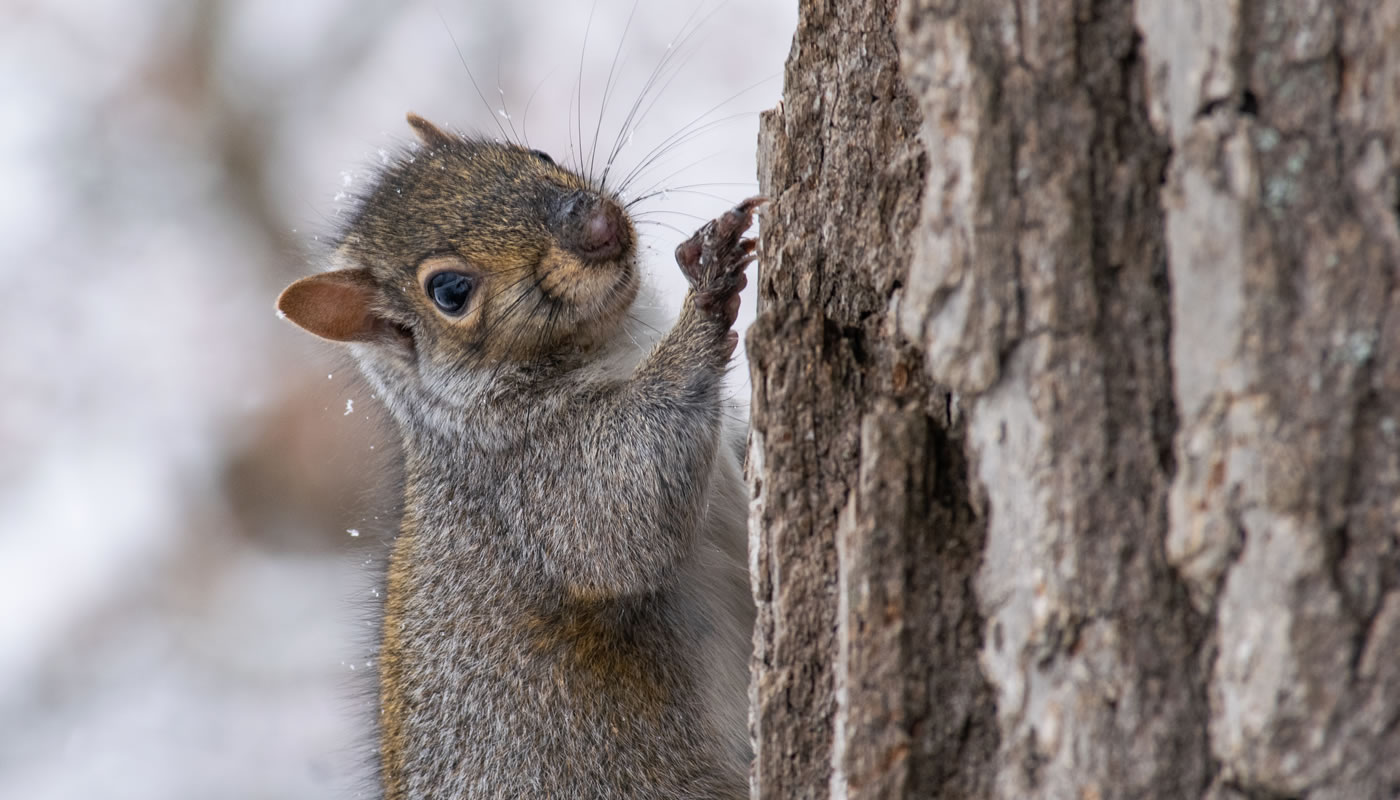As more people venture outside for fresh air to cure their cabin fever (while maintaining social distancing guidelines!), they’re likely to encounter some neighborhood residents they might not have previously thought about, according to Sand Ridge Nature Center naturalist Janice Culver.
Wildlife isn’t limited to forest preserves, national parks or wilderness areas. In Chicagoland, because of urban sprawl and habitat loss, animals have adapted to urban and suburban development.
“They find unique ways to find food and shelter, and to take care of their young,” Culver says. “Spring is a fun time to observe wild animals in our neighborhoods because it is breeding season for many animals and they are generally more active finding mates, building nests and finding food.”
Here are six animals you might hear or see when taking a stroll through the neighborhood this spring:
Eastern gray squirrel
This species is one of the most common wild animals in the Chicago area, DeFalco says. A neat fact about these tree-climbing rodents is that they aren’t always gray – in some neighborhoods they can be black, blonde or even white.
“You’re most likely to see eastern gray squirrels during an early morning or evening walk when they’re most active, but it’s not unusual to see them anytime during the day,” Culver says.
Eastern cottontail rabbit
During spring, mother rabbits make nests, often in yards, with a shallow hole covered with fur and grass. Culver advises against disturbing the nest and the newborn bunnies so human smell doesn’t attract predators.
“They prefer open areas with available cover for shelter or escaping a potential predator,” Culver says. “They usually feed in the early morning and again in the evening, although they will eat when they can since they are constantly on the move.”
American robin
A sure sign of spring is the arrival of the migratory American robin. Some will tough out the northern winters by roosting high in the trees, but spring is their time to shine in Chicagoland. When the robins are hunting for food, the birds will tilt their head at the ground, which some scientists believe allows the birds to hear and see movement in the soil.
“During early morning strolls through your neighborhood, you will probably witness robins searching for worms and other insects on your neighbors’ lawns,” Culver says. “Later in the day, they generally search for berries and nuts.”
Opossum
The only marsupial in North America, the opossum is an opportunistic omnivore known for playing dead in the face of potential danger. The mammal plays a vital role in protecting human health: they can eat up to 5,000 ticks in a single season.
“Opossums are usually nocturnal in nature,” Culver says. “They are always looking for food, so they are often out during dawn and dusk. You will find them in tree cavities, culverts or hollow logs or scavenging garbage cans in urban and suburban areas.”
Striped skunk
The striped skunk, notorious for emitting an intense odor when threatened, is so distinctly colored that animals who have had an unpleasant encounter with them remember to keep their distance, Culver says. The striped skunk gives warning stomps to potential threats before reacting with the stinky spray from their musk glands.
“Usually nocturnal in nature, they are often found scurrying along suburban homes during the early morning and evening hours,” Culver says. “Skunks make their homes in hollow logs, under overturned trees, shrubs, and in the unfortunate case of some homeowners, under porches and sheds.”
On the menu for the striped skunk are grubs and worms, and they also scavenge for small rodents, snakes, amphibians, berries and vegetation.
Downy woodpecker
Knock, knock, knocking on a nearby tree or telephone pole is likely the sound of a downy woodpecker looking for insects or larvae or hammering out a nest, Culver says. The bird is easily identified by its small stature and black and white plumage, and males have a red patch on the back of their head. The downy woodpecker does have a larger lookalike – the hairy woodpecker, although less common in Cook County.
“If you have a suet feeder in your yard, the downy woodpecker is likely to appear,” Culver says. “They often fly from tree to tree, in a very acrobatic rising and falling flight style, distinctive of many woodpeckers, and stay active throughout the day.”

